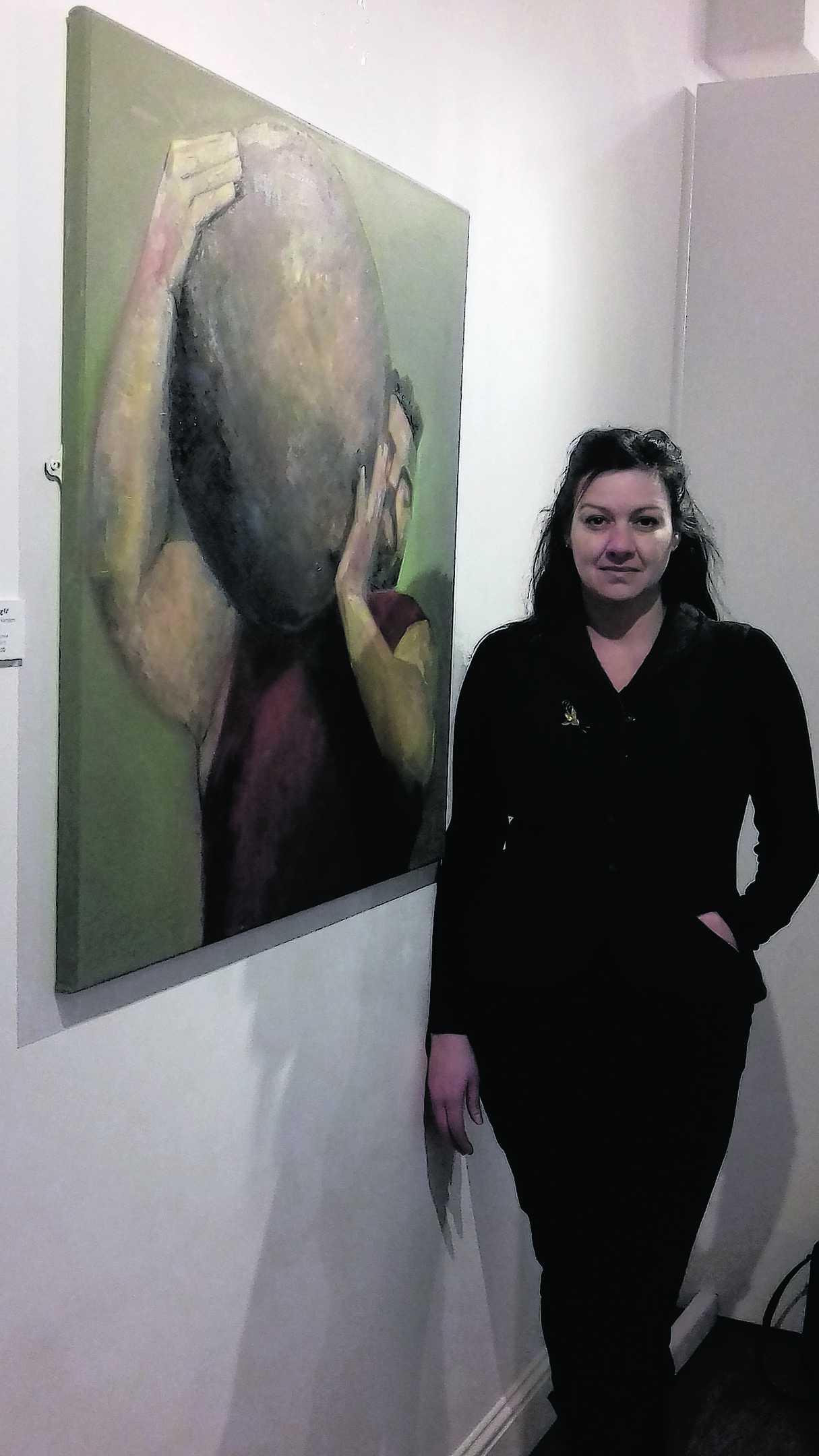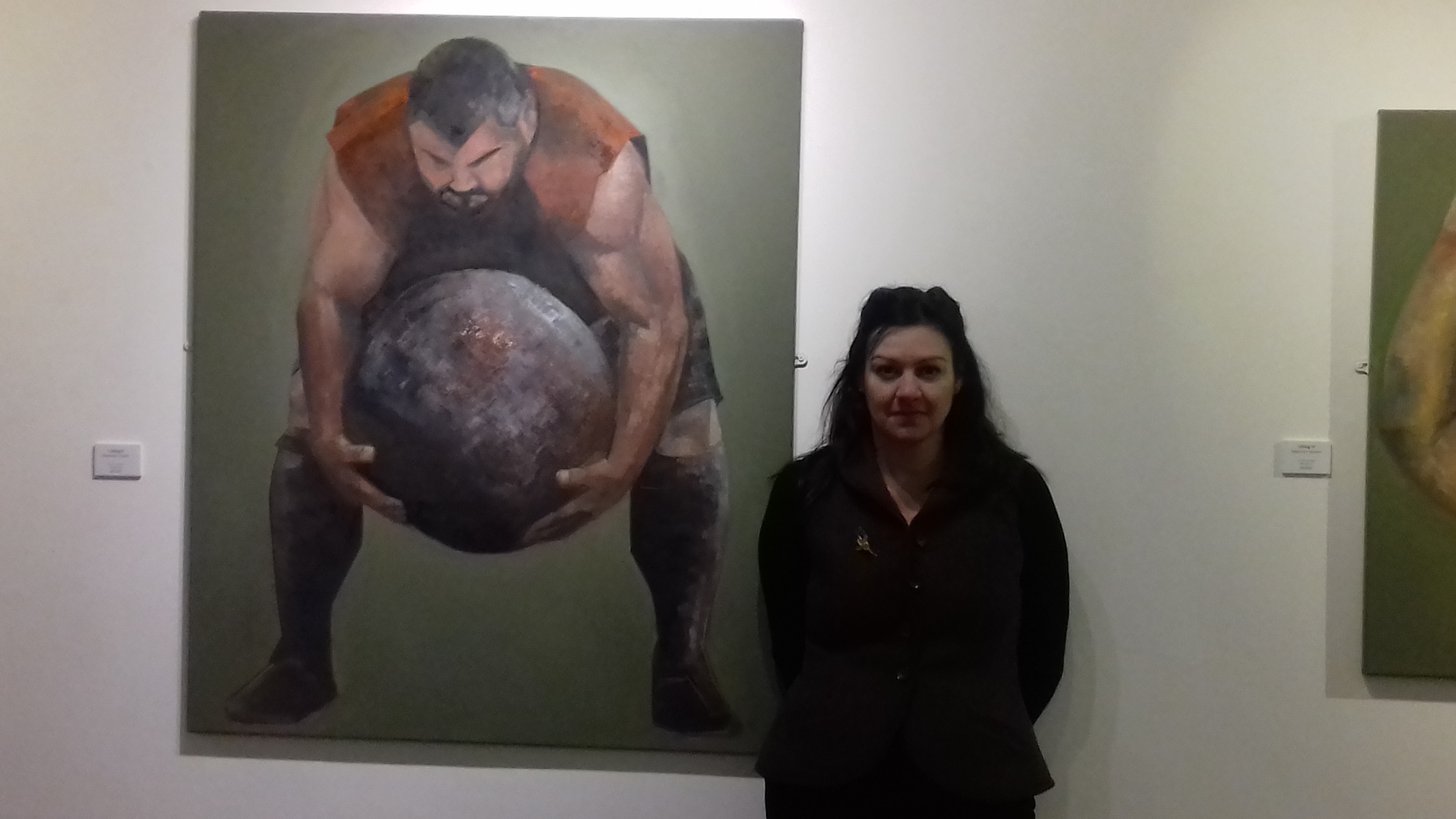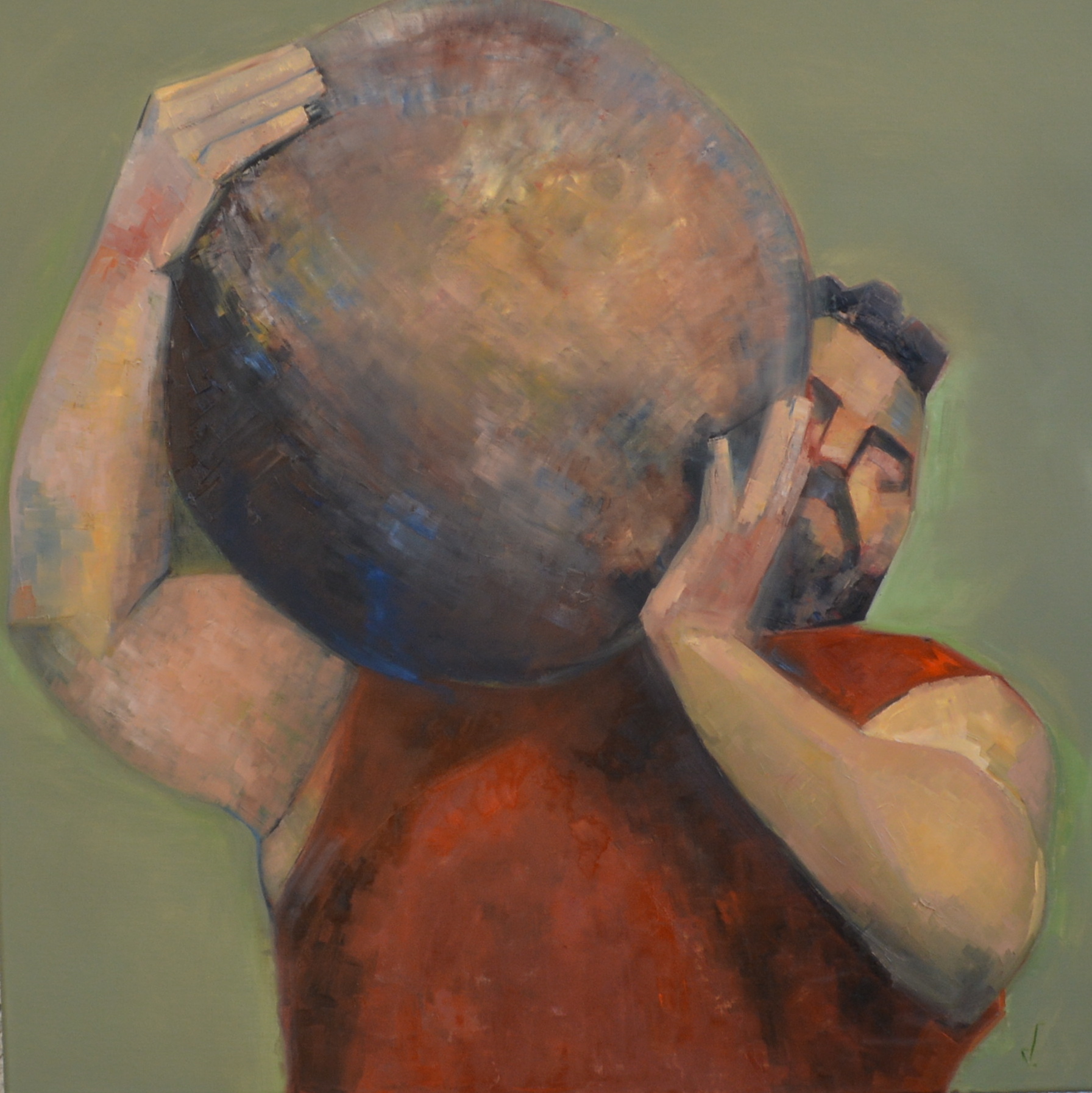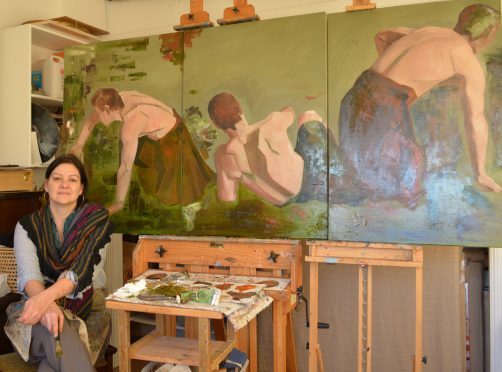Stephanie Vandem’s solo exhibition focuses on the idea of ‘lifting’. We explore the ideas behind Stephanie’s paintings.
When you think of Highland Games, there are many things which spring to mind – Highland dancers, tug o war, tossing the caber. Stephanie Vandem has explored the traditional Scottish event and her exhibition Lifting is in response to her research.
WHAT IS YOUR EXHIBITION, LIFTING, ABOUT?
It is a wee look at the Highland Games, specifically the heavy weight events. For years I have been trying to work with the Highland Games but the composition was difficult. Once I saw these hunched over boys I started to paint. The hunched men and the repetition of roundness in the painting shows the concept of struggle and lifting a heavy burden. We live in an interesting political time, with independence and the issues in Europe raising questions of identity in a person. There is the constant questioning of ourselves which is represented in the heaviness of the boulders in the painting.
HOW DID YOU FIRST BECOME INTERESTED IN THE HIGHLAND GAMES?
I live in Aboyne and the games are a defining part of local culture and cultural identity. They are a proud tradition which has been exported all over the world. It’s a fabulous thing. We don’t really have street parties here, but the games are a focus in the community and a chance to catch up, as are ceilidhs. In Brazil, where I am from, the ceilidh is a big thing. Our parallel is the quadrilha which is dancing that takes place in the summer. The streets are closed and we have a huge dance, so the ceilidh makes me feel at home.
WHAT MEDIUM DO YOU USE FOR YOUR WORK?
I am an oil painter. Sometimes I use wood but this exhibition is painted on canvas. Occasionally I use acrylic, but I feel you really have to know your medium and dig deep with it. You get a lovely quality of layering. In my painting Lifting VI, the first layer was vibrant red. As the oil dries it becomes transparent and gives it depth.
HOW LONG DOES IT TAKE YOU TO DO A PAINTING?
How long does it take to give birth? Sometimes it can be a long time and sometimes it can be over quickly. Developing the concept takes the longest time. To me it is more than just creating an image. It is more than a man holding a big stone. It is about lifting each other, mental health and keeping going. It is about how heavy the world is now and about compassion. The body is holding the weight and is holding it all together.
THERE ARE NO IDENTIFIABLE FEATURES IN THE FACES OF YOUR PAINTINGS, WHY?
I started out as a portrait painter, which is all about the face. But what is a portrait? If you see someone in the distance, you can identify them by their walk or by their hair. There is something larger than the face in portraiture. We live in the era of selfies, so faces are everywhere and I want to look at how portraits are going to evolve. In Lifting, the small studies have no faces and the larger paintings have no identifiable features. A viewer is able to see other people in the painting and participate by putting in their own narrative. The painting could be a study of lots of people.
WHAT IS YOUR PROCESS OF CREATING A PAINTING?
It is like drafting a letter. I start out by drawing it out on paper and the paint is the bit I enjoy. You can carve with paint and chisel.
HOW DID YOU COME TO LIVE IN THE UK?
I like the UK, it feels like home. I was born in Brazil and my mum is French. As a toddler we would go to France and then I came back to Europe to study art. As lovely as it is there, I didn’t feel at home. I found an excuse to travel to London for the summer to learn English. As soon as I arrived and put my toes down, it felt right. Now I am married to a Scottish guy. It is a lovely country with so much potential and a lot of good things, and so does Aberdeen.
WHAT DO YOU WANT PEOPLE TO LEAVE YOUR EXHIBITION THINKING?
I want them to think “wow, I like that image” for its design, content, style and emotionally think or feel a certain way. Feel acceptance of the burdens of life but of optimism as well. Thinking, but uplifting and energised.
Lifting runs at Newave Gallery on Castlegate in Aberdeen until February 7.
